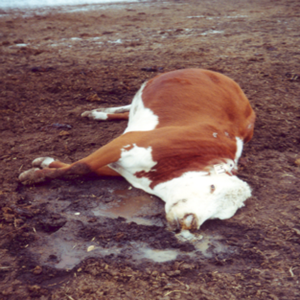
Nitrate Poisoning Cases in Kansas This Fall
The Kansas State Veterinary Diagnostic Laboratory has confirmed in the last few weeks several cattle deaths due to nitrate poisoning.
These cases occurred after feeding this year’s crop of sorghum-sudan grass to fall calving cows. In all cases the forage was not tested to assess nitrate level prior to feeding. (Other forages can also be problematic, including corn plants, oat hay, and weeds such as pigweed and Johnson grass.)
Although nitrate poisoning issues are associated with drought environmental conditions, other factors can contribute to this problem. Among these factors are either excessively low or high growing temperatures, cloudy days, or heavy fertilization.

To assure the forages are not dangerous, it is important to sample prior to feeding. Sampling many bales from different field locations gives the best assurance the forage is safe because nitrate accumulation is not usually uniform across any one field. Samples from bales harvested in specific areas of the field can be pooled, but pooling all samples from a field may not reflect excessive levels in these specific areas.
The best sample to submit from dead animals is 1-2 ml of ocular fluid submitted in a sterile preservative-free container (red top blood tube works well). Figure 1. Please ship this samples on ice packs for next day delivery to the KSVDL.
The dead animal’s eye does not need to be submitted for this test. The procedure for collecting this sample can be found on the KSVDL YouTube™ channel at https://www.youtube.com/watch?v=ysn-n-oZOYo
For more information, please contact KSVDL Client Care at 866-512-5650 or clientcare@vet.k-state.edu.